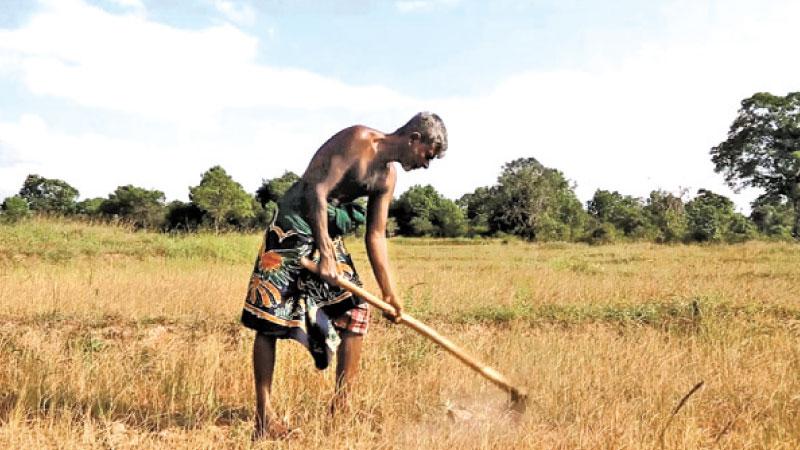
From ancient times, Sri Lanka was a land of village communities. Even today nearly 80% live in villages. Thus, for the success of any national development initiative, the priority should be given to address the needs of the rural communities.
Since early 50s, we have implemented a number of special programmes to uplift village communities. The main objective of all these programmes is the improvement of the socio - economic condition of the rural societies. All programmes had some mixed results.
Sri Lanka has been experiencing moderate growth in its GDP averaging 5.5% per annum but due to its relatively low GDP per capita, currently it is ranked in the bottom one third of the world. This could be due to the issue of poverty, specifically, rural poverty. Nearly 90% of the poor live in rural areas, with over 80% of Sri Lanka’s population still living in rural areas.
Therefore, poverty alleviation, particularly related to the rural sector, assumes great significance and must occupy a central place in planning efforts. Sri Lanka must first globalise its internal economy, even as it tries to join the mainstream of globalisation. How to achieve this daunting task?
Three factors
A managerial approach to the problem involving several interest groups and voluntary organisations is needed. Most poverty alleviation programmes must combine a number of activities, designed to address the causes of poverty.
First, food security. Second, developing income generating opportunities for the poor. Third, strengthening the social sector. In all these efforts, involvement of the local community, is a must, right from the planning stage.
Rural poverty reduction is closely linked to agriculture. Global bodies like World Bank, Food and Agriculture Organisation (FAO) believe that agriculture had been an important driver of poverty reduction and which accounted for nearly one third of the decline in global poverty over the past three decades. However, they warn that it was possible only when the agriculture sector is subjected to productivity improvement and modernisation through diversification and commercialisation. We have seen this happen in Thailand, Malaysia and now in India.
These three countries introduced a number of policy changes to reach their successes. They built farmers’ capacity, enhanced their access to credit, improved marketing facilities and offered tax concessions for farmers’ essential agricultural equipment.
Off-farm activity
In Sri Lanka, there is a gold mine of diversity that we could tap into to help give our people access to the food they need with the required nourishment while minimising the impact on our environment. To make use of this asset, active research is necessary. Investing more broadly in crop diversity and crop modernisation are two important parts of the solution to minimise rural poverty. To achieve the country’s food security, we must forgo our myopic reliance on wheat, rice and corn.
Since farming is a seasonal activity, to ensure year-round income, off-farm economic activities based on local skills, resources and simple technologies both for men and women, should be identified and established. This will not only generate employment, but also increase savings for rural investment. This is a crucial factor in reducing significantly poverty levels.
The key element is marketing the products in such a way that a major part of the income goes to the workers. Here, the involvement of the corporate and cooperative sectors might prove useful. NGOs can also help in this effort, as in some areas they are involved in rural-upliftment projects. With the spread of information technology, the possibilities of linking rural communities with the outside world for developmental activities, such as sourcing technology, and reaching out to new markets have become easy.
Women groups
If rural poverty alleviation programmes are to reach the targeted group, in particular women and children, they need to be specifically addressed to them. They should have an income component and reduce the drudgery of work. Developments in the IT sector are ideally suited to training women in the younger age group, to acquire new skills and empower themselves to overcome gender discrimination.
Along with new activities, the tendency to save, must also be cultivated among women, so that their economic status improves, allowing them to take part in important family decisions.
Formation of women’s organisations will further aid this process by getting them elected to village communities. Improvement in the women’s status will have to be followed up by betterment in health, education and community welfare programmes. Health care projects include issues related to hygiene, sanitary facilities, water supply, health information, pre - and post-natal maternity care and nutrition education.
Organisations
Years ago, most of the farmers in South Asian countries have also long suffered from a number of problems. Lack of access to seeds and fertilisers at affordable prices, exploitative buyers, weak markets, weak rural infrastructure, inadequate financial services, have all contributed to creating an environment in which farming has been risky and unprofitable for smallholders.
These farmers decided to address their conditions of poverty by organising themselves into farmers’ self-help groups and organisations. Farmers’ organisations refer to independent, non-political, non-governmental, membership-based rural organisations of part or full-time self-employed smallholders and family farmers. They were organised from local, to national, to sub regional, to regional and international levels. Many of the farmer organisations have mixed men and women farmers as members.
Their positions began to improve. Their bargaining power began to become stronger. Their needs and opinions were heard by policy makers and the public.
In addition, the organisations began to help farmers gain skills, access inputs, form enterprises, process and market their products more effectively to generate higher incomes.
Sri Lanka can take a cue from these experiences and establish similar organisations.
No quick-fix solutions
There are no quick-fix solutions to the problems of rural poverty. Through monitoring the programmes and its overall approach to development, the farmer organisations can improve its effectiveness in poverty alleviation, in partnership with Central and Provincial governments, NGOs and local communities.
